The radial artery in coronary surgery, 2018
- PMID: 33060944
- PMCID: PMC7525670
- DOI: 10.1007/s12055-018-0694-3
The radial artery in coronary surgery, 2018
Abstract
It is now 25 years since the radial artery (RA) was reintroduced in coronary surgery. It has evolved into being a significant coronary artery bypass conduit and ranks third in usage after the internal thoracic artery (ITA) and saphenous vein grafts (SVG). Its advantages are that it can be readily and efficiently harvested, is of good length and appropriate size for coronary artery bypass graft (CABG) surgery, is robust and easy to handle, and remains free of atheroma, and there is minimal wound morbidity. The RA must be used judiciously with attention to spasm prophylaxis because of its muscular wall, and by avoiding competitive flow. Its patency is equivalent to the ITAs when placed to similar coronary territories and under similar conditions (stenosis, size, quality) and RA patencies are always superior to those of SVG in both observational and randomized studies-88-90% versus 50-60% at 10 years, and 80-87% versus 25-40% at 20 years. Its use and excellent patencies result in survival results equivalent to bilateral internal thoracic artery (BITA) grafting and always superior to left internal thoracic artery (LITA) +SVG. Typical radial artery multiarterial bypass grafting (RA-MABG) 10-year survivals are 80-90% versus 70-80% for LITA-SVG. In general, for every 100 patients undergoing CABG, 10 more patients will be alive at 10 years post-operatively. The RA also is important in achieving total arterial revascularization, and several reports indicate a further survival advantage for patients having three arterial grafts over two. The RAs are especially useful in diabetic, morbidly obese patients, those with conduit shortage, and leg pathology, and in coronary reoperations. Although the RA has equivalent patencies to the right internal thoracic artery (RITA), it is much more versatile. RAs that have been instrumented by angiography or percutaneous coronary intervention should be avoided. The radial artery has proved to be an excellent arterial conduit, is equivalent to but more versatile than the RITA, and is always superior to SVG. Its use should be part of every coronary surgeon's skill set.
Keywords: Arterial grafting; Coronary artery bypass; Radial artery.
© Indian Association of Cardiovascular-Thoracic Surgeons 2018.
Conflict of interest statement
Conflict of interestThe author declares that he has no conflict of interest.
Figures
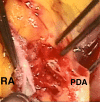
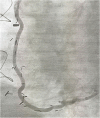
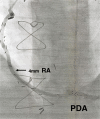
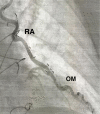
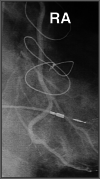
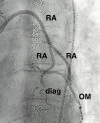

Similar articles
-
Equipoise between radial artery and right internal thoracic artery as the second arterial conduit in left internal thoracic artery-based coronary artery bypass graft surgery: a multi-institutional study†.Eur J Cardiothorac Surg. 2016 Jan;49(1):188-95. doi: 10.1093/ejcts/ezv093. Epub 2015 Mar 11. Eur J Cardiothorac Surg. 2016. PMID: 25762396
-
The second best arterial graft: a propensity analysis of the radial artery versus the free right internal thoracic artery to bypass the circumflex coronary artery.J Thorac Cardiovasc Surg. 2014 Jan;147(1):133-40. doi: 10.1016/j.jtcvs.2013.08.040. Epub 2013 Oct 5. J Thorac Cardiovasc Surg. 2014. PMID: 24100104
-
Worldwide Trends in Multi-arterial Coronary Artery Bypass Grafting Surgery 2004-2014: A Tale of 2 Continents.Semin Thorac Cardiovasc Surg. 2017 Autumn;29(3):273-280. doi: 10.1053/j.semtcvs.2017.05.018. Epub 2017 Aug 8. Semin Thorac Cardiovasc Surg. 2017. PMID: 29195570
-
The right internal thoracic artery: is it underutilized?Curr Opin Cardiol. 2011 Nov;26(6):528-35. doi: 10.1097/HCO.0b013e32834b9f87. Curr Opin Cardiol. 2011. PMID: 21918432 Review.
-
Reusing the patent internal mammary artery as a conduit in redo coronary artery bypass surgery.Interact Cardiovasc Thorac Surg. 2016 Mar;22(3):346-50. doi: 10.1093/icvts/ivv338. Epub 2015 Dec 15. Interact Cardiovasc Thorac Surg. 2016. PMID: 26669852 Free PMC article. Review.
Cited by
-
Total Arterial Revascularization: Evaluating the Length of the Radial Artery in a Composite Graft Configuration.Ann Thorac Cardiovasc Surg. 2024 Jan 26;30(1):23-00084. doi: 10.5761/atcs.oa.23-00084. Epub 2023 Oct 28. Ann Thorac Cardiovasc Surg. 2024. PMID: 37899176 Free PMC article.
References
-
- Mehta RH, Ferguson TB, Lopes RD, et al. Saphenous vein grafts with multiple versus single distal targets in patients undergoing coronary artery bypass surgery: one-year graft failure and five-year outcomes from the project of Ex – Vivo vein graft engineering via transfection. (PREVENT) IV trial. Circulation. 2011;124:280–288. doi: 10.1161/CIRCULATIONAHA.110.991299. - DOI - PMC - PubMed
LinkOut - more resources
Full Text Sources
